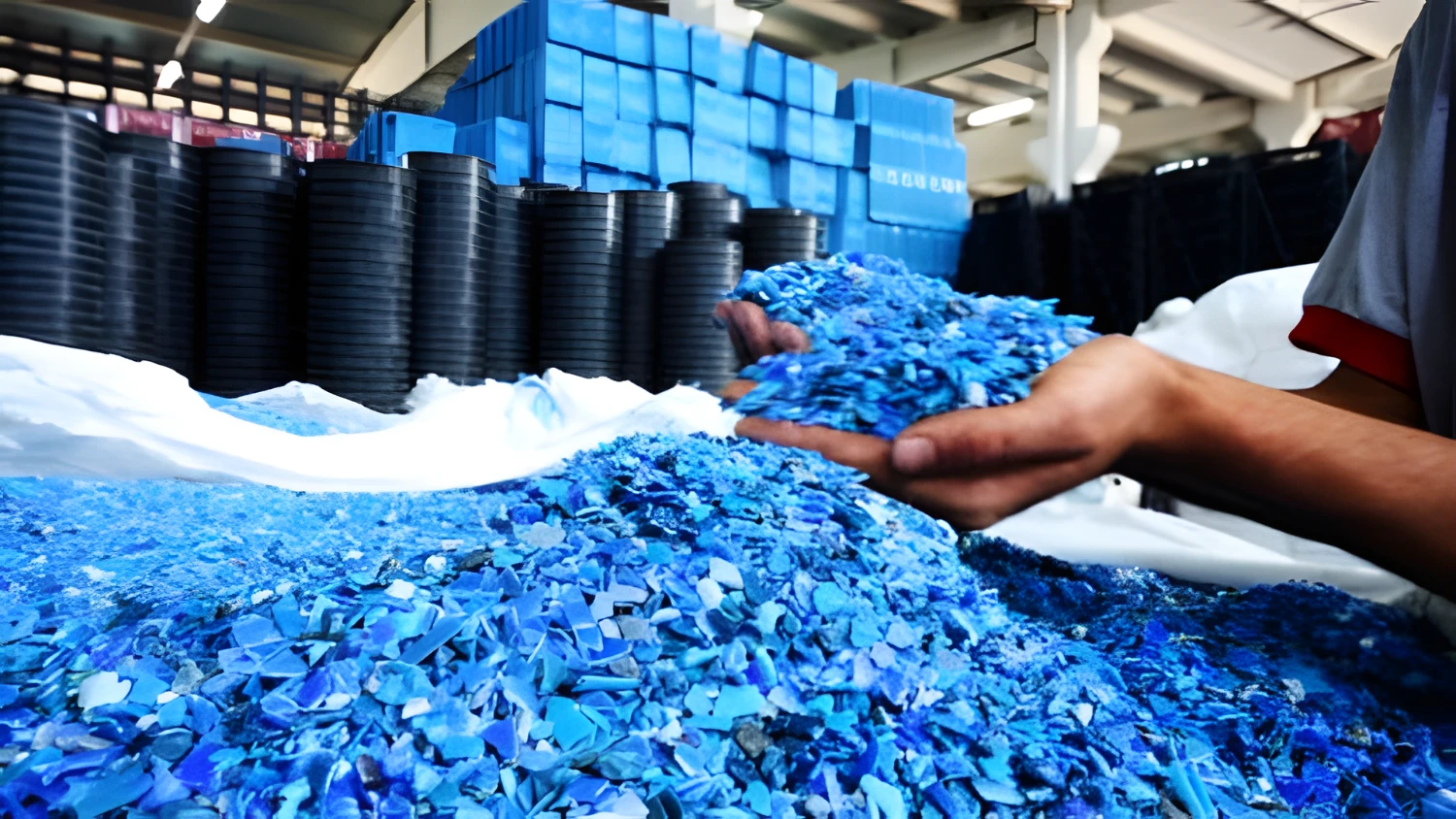De samenleving heeft een gemengde mening over kunststoffen, vooral in de afgelopen jaren, toen de publieke aandacht voor plasticvervuiling toenam. In de hele waardeketen van de industrie zijn inspanningen geleverd om fundamenteel te profiteren van de voordelen van kunststoffen en tegelijkertijd te voorkomen dat ze in het milieu terechtkomen. De duurzaamheid van kunststoffen beperkt zich niet langer tot de industrie zelf, maar heeft ook de aandacht getrokken van verschillende aspecten van de samenleving.
Inhoud
- 1 Sustainable Plastics Now Linked to Climate Change and ESG
- 2 More Brands Adopting Recycled Plastics
- 3 Food-Grade Recycled Plastics Becoming a Trend
- 4 Household Appliance and Automotive Industries Embrace Recycled Plastics
- 5 Packaging Industry Faces Unique Challenges
- 6 Faster Response from Processing and Materials Sectors
- 7 Quality Improvement and Chemical Recycling
- 8 Standardization and Digital Upgrading of Recycling Systems
- 9 Towards a Circular Economy for Plastics
Sustainable Plastics Now Linked to Climate Change and ESG
Plastics sustainability has been particularly linked to climate change issues related to carbon reduction, as well as the environmental, social, and corporate governance (ESG) areas associated with responsible investment. These connections have driven significant innovation across the plastics industry value chain. The entire plastics industry chain should be redefined around sustainability and recycling.
More Brands Adopting Recycled Plastics
From the brand side, almost all brands have created sustainability positions, with plastics being a key focus area. Plastics are required to be recyclable after use to avoid being incinerated or landfilled, which would create additional environmental burdens. Global regional and national industry associations, including CEFLEX (Circular Economy for Flexible Packaging) in Europe, APR (Association of Plastic Recyclers) in the United States, and the Green Recycled Plastics Supply Chain Alliance in China, have all developed corresponding rules and standards for defining recyclability.
In the beverage industry, many brands have set specific action targets, such as Coca-Cola’s commitment to use 100% recyclable packaging globally by 2025 and to incorporate more than 50% recycled materials in its global product packaging by 2030.
Food-Grade Recycled Plastics Becoming a Trend
While food-grade recycled plastics are still under discussion domestically, they have become a global trend, with most countries having developed the use of food-grade recycled materials. This is expected to catalyze a market of at least hundreds of thousands of tons for food-grade recycled polyethylene terephthalate (rPET). The “bottle-to-bottle” market will directly compete with existing “bottle-to-fiber” markets for upstream bottle sources, driving up the prices of used beverage bottles before supply and demand balance.
Household Appliance and Automotive Industries Embrace Recycled Plastics
In the household appliance industry, the use of recycled plastics has become standard practice, with almost all major brands like Gree and Haier deeply involved in plastic recycling and reuse. Following the abolition of the waste electrical and electronic product treatment fund in January, the plastic recycling in the appliance industry will enter a new phase. Without “subsidies,” maximizing the value of plastic recycling from discarded appliances will further drive industry development.
In the automotive industry, the EU has issued new regulations requiring at least 25% recycled plastics in plastics used for manufacturing new vehicles, with 25% of that amount needing to be recycled from end-of-life vehicles. This regulation has extended the use of recycled plastics from exterior to interior automotive applications, prompting the automotive industry chain to actively develop corresponding technologies and formulations to meet regulatory requirements. More importantly, automakers are rethinking the design of automotive components and materials to facilitate easier recycling from end-of-life vehicles.
Packaging Industry Faces Unique Challenges
The packaging industry faces a unique situation. Rigid packaging has relatively simple recyclable design and mature recycling processes. For flexible packaging, progress has been slower in finding alternatives to aluminum foil, metallized coatings, and other non-recyclable structures due to barrier requirements. Some brands have begun considering bio-based or biodegradable plastics to reduce environmental impact. With the development of co-extrusion of ethylene-vinyl alcohol copolymer (EVOH), silicon oxide (SiOx) deposition, and other recyclable packaging structures, it may become possible to achieve recyclable flexible packaging designs within cost constraints.
Faster Response from Processing and Materials Sectors
From the processing side, almost all major equipment manufacturers, including Krauss-Maffei and ENGEL in injection molding, W&H in blown film, and relevant domestic equipment companies, have launched new equipment suitable for recycled plastic processing. As brands demand plastic recyclability and the use of recycled plastics in plastic products, processors have begun considering how to upgrade their equipment to meet market demands.
However, the bigger change is coming from the raw materials side. Recycled plastics have never been as important to the industry as they are today, with almost all plastic resin manufacturers, including global petrochemical giants, now participating in the recycled plastics sector. Domestic announced cases include LyondellBasell and Zhenuo Environmental Planning partnering to build a plastic recycling plant in Zhaoqing, Guangdong, and Ineos Styrolution collaborating with GreenCircle to produce high-quality recycled acrylonitrile-butadiene-styrene (ABS).
Furthermore, Dow has proposed to provide 3 million tons of circular or renewable products annually by 2030, produced from plastic waste and other alternative feedstocks. Recycled plastics will become a standard offering for plastic resin manufacturers, meaning that in the not-too-distant future, most petrochemical companies will provide recycled plastic products to the market alongside their virgin plastic products.
Quality Improvement and Chemical Recycling
Currently, recycled plastic production primarily involves collection, shredding, washing, and pelletizing. Previously, recycled plastics were mainly used in injection molding, where the process did not place high demands on quality. However, with applications expanding into blown film, extrusion, and fibers, new requirements have emerged for contaminants, odors, and processing performance. This has driven quality improvements in the recycling process, including better odor removal and material modification to suit downstream processing requirements, in addition to conventional contaminant removal.
While mechanical recycling remains the mainstream for recycled plastic products, chemical recycling has also attracted significant industry attention. Compared to mechanical recycling, chemical recycling yields products with better performance, lower carbon emissions (energy consumption) in certain scenarios, and more consistent product quality. For PET, for example, chemical recycling has more competitive unit costs and better carbon reduction effects.
However, chemical recycling falls under the chemical industry domain, presenting certain barriers for traditional recycled plastic companies to enter. Therefore, industry collaboration and integration will likely become the trend, with the key integration point being the source and cost control of recycled plastics.
Standardization and Digital Upgrading of Recycling Systems
Industry development requires standardized sources of discarded plastics, which will drive the standardization and digital upgrading of recycling systems. Previous recycling systems were fragmented, multi-step, and lacked standardization, making them unable to continue supporting the recycled plastics industry’s demands.
Initiatives like the “Two Network Integration” pilot project of “Love Recycling, Love Classification” and Lumhai Environmental Protection’s low-value recyclable sorting center are attempts in this direction. They aim to integrate and upgrade recycling systems to create an efficient, low-cost, and traceable source of “feedstock” for recycled plastics, further supporting the development of relevant supply chains.
Towards a Circular Economy for Plastics
Plastics are a commodity, with global consumption of around 400 million tons per year, of which recycled plastics account for only around 32.5 million tons, or 8%. As new energy vehicles become more prevalent and gasoline/diesel consumption peaks, obtaining monomers from the refining process to produce virgin plastics will face pressure, creating opportunities for further increasing the use of recycled plastics. Recycling used plastics or converting them back into monomers for reuse should be the best opportunity now.
Today’s consumers and markets have voted in favor of plastic sustainability, and supply chains are actively embracing recycled plastics. As a green supply chain practice project, the “Double Easy Certification” launched by GRPG has been recognized by brands including Procter & Gamble, Mengniu, Liby, Coca-Cola, and Shanghai Jahwa, introducing easily recyclable plastic packaging products to the market.
More importantly, the use of recycled plastics is becoming a concerted action across the industry value chain. As these gears start turning, we hope our efforts will make them turn faster, better converting recycled plastics into use while avoiding environmental release and creating more value.
There is no waste; only resources in the wrong place.


